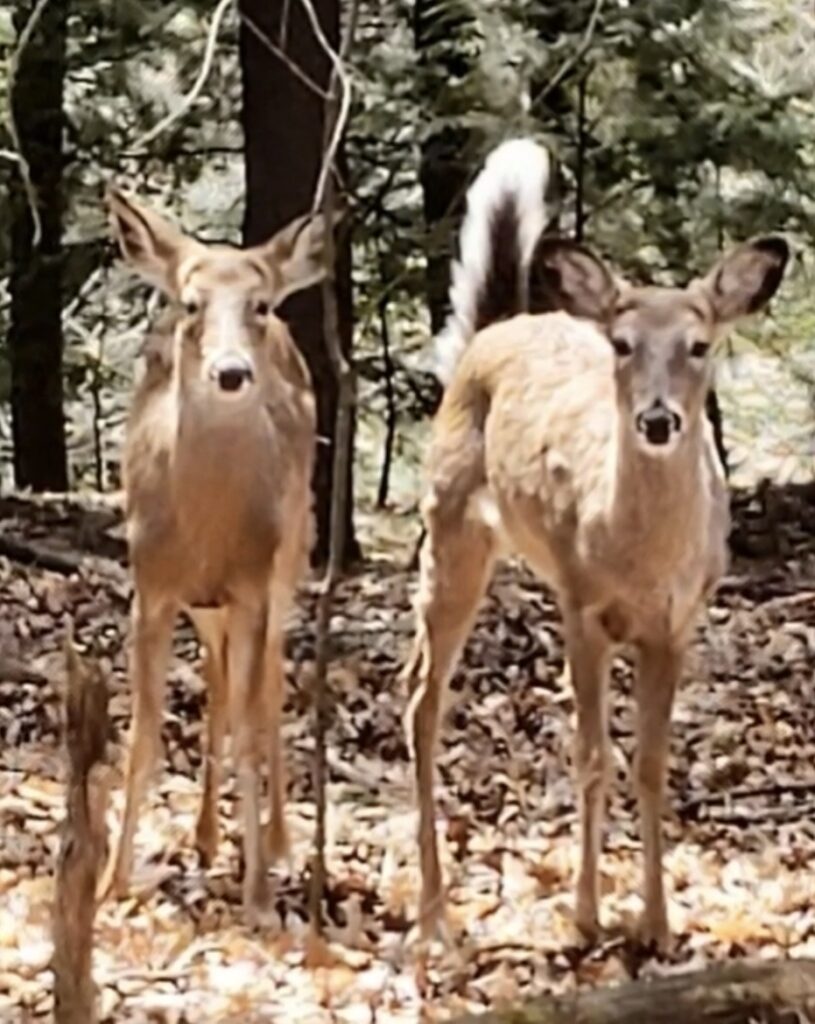Deer Conflicts
Habitat loss has forced deer into human spaces. To reduce the population these gentle animals are often killed. This approach is ineffective and unnecessary. There are ways to peacefully coexist with deer.
Why killing deer does not work
Deer respond to a decrease in population by reproducing more quickly. With more food available female deer will give birth to twins and triplets. The fawns will have higher survival rates. The result is a bounce back in the numbers.
There are many things we can do to limit the issues people complain about. Less deer will not solve problems.

Plant damage
The remaining deer will still eat plants. It is more effective to deer proof by incorporating flowers deer do not like. There are many types of repellants with odors and tastes the deer do not like. Deer scare devices using sprinklers and lights are very effective. There are a variety of fencing options. Traditional fencing, electric fencing, hardware cloth, netting to protect plants and wraps to prevent damage to trees.
Deer/car collisions
There will still be deer/car collisions. Aware drivers prevent accidents. Adequate signage is needed to alert drivers to where deer are known to cross. Mill Creek has many roads in neighborhoods where it is very difficult to see and the signage is not sufficient. There are many types of scare devices to deter deer from roads. Motion activated sprinklers and devices that emit ultrasonic waves. Motion sensing devices that trigger flashing strobe lights when approached from any direction. The deer are warned that a car is approaching and the driver is alerted that something is triggering lights they may not be able to see.

Ecological Damage
Deer are blamed for larger ecological problems, biodiversity loss and forest growth, that many other factors contribute to. Forest are not going to stay the same. Insects, disease, pollution, forest regeneration, loss of soil fertility, browsing by other animals, invasive plants and parasitic organisms. Climate and weather extremes also contribute. As trees mature they will provide more shade, affecting plants.
